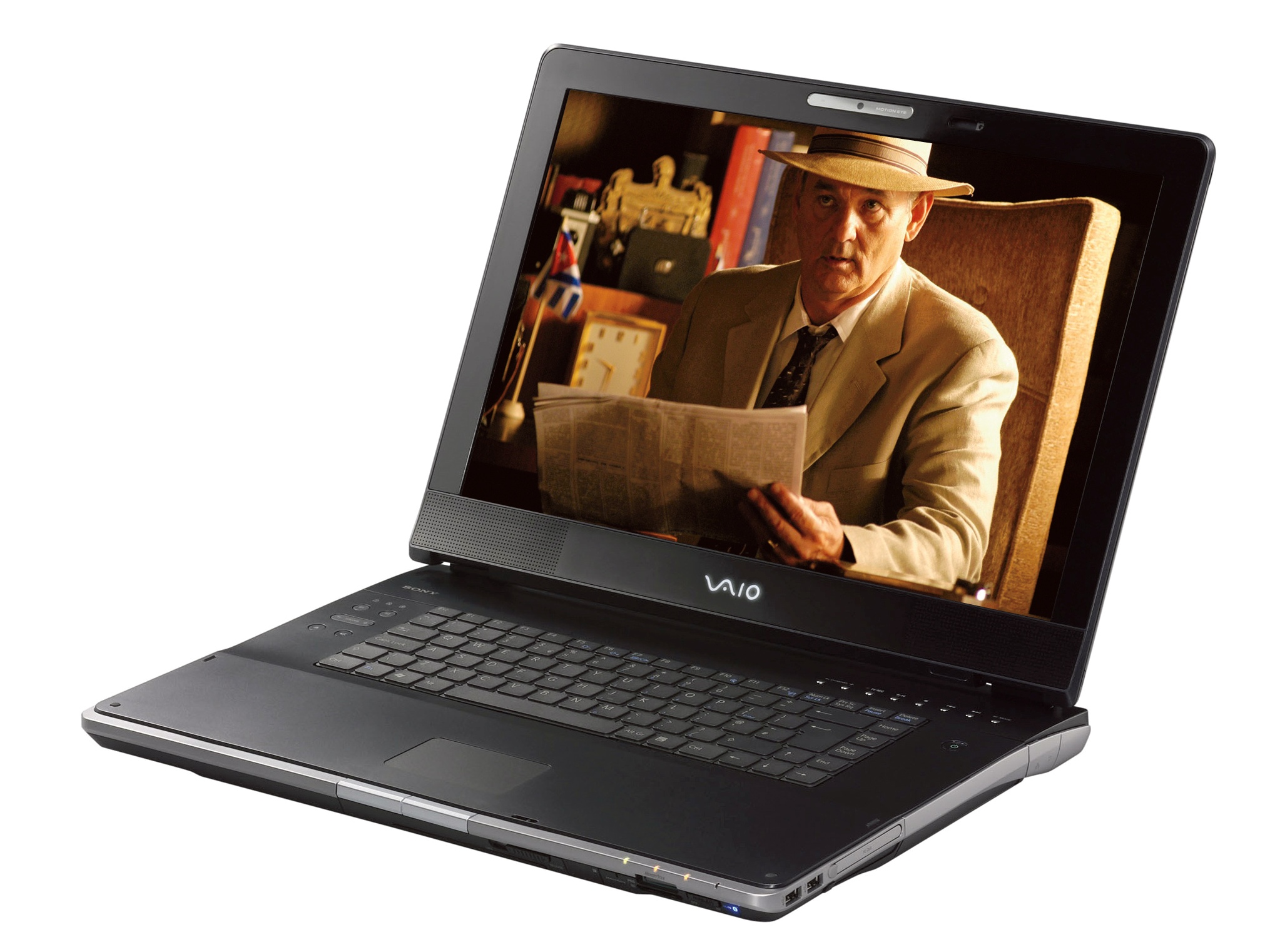TechRadar Verdict
Top-notch features a-plenty, but pricey
Why you can trust TechRadar
Like the mysterious monolith from 2001: A Space Odyssey, this glossy black slab from Sony marks a new chapter in the development of mankind. Overdramatic? Perhaps, but the advent of Blu-ray is a significant step-up in consumer data storage - think going from CD to DVD and you're pretty much there.
Blu-ray enables you to play and burn discs of up to 25GB. That's over five times the storage capacity of a standard DVD, and in these times of 10-megapixel cameras and high-definition video content, you're going to need some way of storing and viewing all that media. The alternative is to plump with the HD DVD format that's supported by the likes of Microsoft and Toshiba. Both technologies have their pros and cons - we'll have to see who wins out.
Of course, you wouldn't expect Sony to wrap its Blu-ray technology in a bog-standard laptop. The VGNAR11S's features read like a laptop wish-list: Intel 2GHz Core Duo CPU, 200GB hard disk with RAID functionality, 1GB RAM, full-sized keyboard, dodgy trackpad... er, hang on a minute. Yes, the buttons of the pad are on the front of the chassis rather than below the pad. This makes clicking just that little bit awkward - a case of style over practicality, perhaps?
Big screen delight
This minor faux-pas is forgotten when you view the 17-inch 1080HD X-black screen, which has a native resolution of 1,920 x 1,200. It's wonderfully sharp and bright... and sucks juice out of the power cell like there's no tomorrow. You're looking at around one hour 40 minutes of battery life, which isn't great. This, coupled by the weight of the laptop, means that it'll rarely leave home.
This point is backed up by the presence of Windows XP Media Center Edition, the integrated TV tuner (which works a treat) and - ta-dah! - the HDCP compliant HDMI port. At last, the true purpose of Sony's monolith is revealed. Connect it up to a high-definition TV and you'll be able to pump out a video signal, enabling you to watch commercial Blu-ray movies on a bigger screen without having to fork out on a separate player.
Don't worry about intrusive noise coming from the VGNAR11S while you're watching your favourite movies: it's almost silent in operation, if somewhat warm. It's a laptop in name only, if you see what we mean. Unfortunately, the laptop's intended noise source - its built-in speakers - fail to live up to its media-hub promise. While they're certainly not on the wrong side of tinny, they lack the requisite bassy oomph that, say, Toshiba's Qosimo devices have in spades.
The VGN-AR11S's build quality is commendable; both the screen lid and the base feels solid. The attractive silver trim extends around the edges of the laptop, with flaps protecting the various connectivity options. The keys feel light yet responsive and there's plenty of space to rest your palms. The absence of a numeric keypad means that there's room for a few shortcut keys, while a row of discreet A/V buttons appears top right of the keyboard.
Sign up for breaking news, reviews, opinion, top tech deals, and more.
Overall, this is an excellent introduction to the world of Blu-ray and high-definition video. Sony's done well to squeeze this nextgeneration technology into an attractive, compact device. What's less clear-cut is the price point. At just shy of two grand, it's a lot to shell out for functionality that'll be significantly cheaper in less than a year's time. Buy now and you'll be the talk of the hi-def town - just don't think what else you could have bought with your hard-earned cash instead.
Tech.co.uk was the former name of TechRadar.com. Its staff were at the forefront of the digital publishing revolution, and spearheaded the move to bring consumer technology journalism to its natural home – online. Many of the current TechRadar staff started life a Tech.co.uk staff writer, covering everything from the emerging smartphone market to the evolving market of personal computers. Think of it as the building blocks of the TechRadar you love today.
